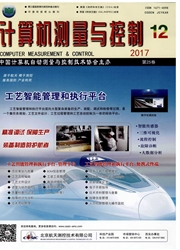

 中文摘要:
中文摘要:
建立简单链型悬挂接触网模型和受电弓系统三元质量模型,并给出了动力学方程;介绍NARMA L2神经网络模型,将NARMA-L2模型应用到弓网振动控制系统中并给出了主动控制方案;针对列车速度为200 km·h^-1、250 km·h^-1、300 km·h^-1、350 km·h^-1,分别对控制器控制效果进行仿真研究,得到弓网接触力和受电弓抬升量仿真曲线,对仿真得到的数据从最大值、最小值、平均值、标准差四个方面进行分析,并与没有引入NARMA-L2模型控制所得的仿真结果做了对比研究;对比结果表明:与无NARMA-L2控制相比,在车速为200 km·h^-1时,弓网接触力标准差降低59.46%,受电弓抬升量标准差降低37.72%;车速为250 km·h^-1时分别降低60.04%、37.99%;车速为300 km·h^-1时分别降低59.91%、36.74%;车速为350 km·h^-1时分别降低59.53%、35.84%;因此,基于NARMA-L2神经网络的弓网振动控制系统可以大大降低弓网振动幅度,增强弓网耦合性,从而使弓网接触更稳定,实现更好的受流.
 英文摘要:
英文摘要:
Simple chain suspension eatenary system model and three--dimensional mass model of pantograph system were established, kinetics equation was given in this paper. NARMA--L2 neural network model was introduced and applied to the pantograph--catenary vi bration control system and an active control proposal was designed. Simulation research were done as to the effect of controller for speed of 200 km · h^-1 , 250 km · h^-1, 300 km · h^-1 , 350 km · h^-1. Also the simulation get pantograph--catenary contact force and pantograph uplift curve, simulation data was analyzed from four aspects maximum, minimum, average and standard deviation. Comparative study was made without introduction of NARMA--L2 model. Comparative results show that compared with the control without NARMA--L2 model, standard deviation of pantograph--catenary contact force lower 59.46%, and that of pantograph uplift lower 37.72% for the speed of 200 km· h^-1. Respectively, it lower 60.04M and 37.99% when 250 km · h^-1, 59.91% and 36.74% when 300 km· h^-1, 59.53% and 35.84 % when 350 km· h^-1. Therefore, pantograph vibration control system based on NARMA L2 neural network can greatly reduce the vibration amplitude of pantograph--eatenary, enhance pantograph--eatenary coupling, thus achieve more stable pantograph--catenary con- tact and better current collection.
 同期刊论文项目
同期刊论文项目
 同项目期刊论文
同项目期刊论文
 期刊信息
期刊信息
